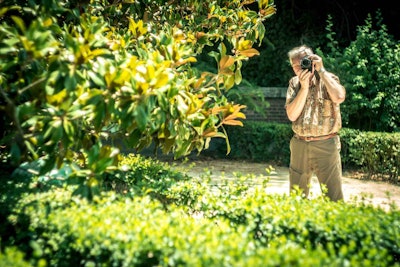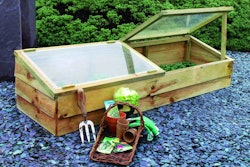 Taking pictures may seem as simple as point and shoot, but following these tips can help your photos look so much better.
Taking pictures may seem as simple as point and shoot, but following these tips can help your photos look so much better.Photo: Kristijonas Dirse/Flickr
When you’re proud of your work, you want to show it off, but even the best landscaping project can look lackluster in a poorly taken photo.
As a landscaping professional, you have two main options: Either take the portfolio photos yourself or hire a professional. Hiring a professional may not be feasible for you if money is tight, or maybe you just prefer to do things yourself.
Here are some tips on how to capture the essence of your work and how to compose better shots.
Lighting
The etymology of the word photography means “drawing with light,” so it makes sense that lighting is one of the most important things to consider when you take a picture.
It is best to take your shots either in the early morning or the evening light. Taking pictures at noon on a bright sunny day washes out vibrant colors and creates harsh contrast between darks and lights.
“If you want to improve your garden photography, shoot when it’s overcast,” Cindy Dyer, a professional photographer, tells Nikon.
The eye is naturally drawn to the brightest point in a photo, so pay attention to what is bright in the viewfinder. If there is something brighter than your intended subject, zoom in or relocate to a different vantage point to eliminate the distraction.
Rule of thirds
One of the most well-known concepts of photography composition is called the rule of thirds. The principle involves dividing a shot into thirds with what looks like a tic-tac-toe board.
When you choose to place your subject in one of these four intersecting lines it helps make the photo look more dynamic and more balanced. Even though you’d think people would automatically look at the center of the photo, studies have shown these intersecting points are where a viewer naturally looks.
If you are using a digital single lens reflex (DSLR) camera, you’ll find that most allow you to turn on these gridlines in the viewfinder or the LCD screen. You can even turn gridlines on your iPhone by going to Settings, Photos & Camera, and then switching on Grid.
Framing
In the landscape, you will often find a structure of some kind – be it a pergola, an arching garden gate or some tree boughs – that can serve as natural framing for your shots.
This is another technique that brings the viewer’s eye to your intended subject. Framing shots can be intriguing because doing so tends to provide depth and layers to the photo, inviting your audience to wonder what is beyond.
However, just because you can frame a shot doesn’t mean you should. Ask yourself if the framing will add or detract from the photo. If it makes the image seem cramped and unappealing, even distracting, then set aside framing for another shot.
Variety
With gardens and landscapes, there is generally a lot to take in. This is why a variety of shots, both vertical and horizontal, need to be taken.
“Picturing the garden as a whole is a prime goal and the establishing shots set the scene,” Dyer says. “I’m looking for clean graphics and strong colors, and I tend to try most of my subjects in both vertical and horizontal formats. I think that’s almost as important as shooting a scene from every angle possible.”
By mixing up viewpoints, you can change your background and find interesting perspectives you might otherwise have missed. Even when you’re taking lots of pictures try to keep quality in mind. Don’t rush your shots and take several minutes to actually see the landscape.
Having a portfolio of wide angles, medium shots, and macro photography produces an overall impression that is more engaging to viewers.
Tripod
If you ask any professional photographer what gear you should use, they’re going to advise investing in a tripod – at least if you already have a dependable DSLR camera.
Tripods enable you to gain a better depth of field, and you can compose your shots more carefully. What’s more, a tripod lets you take steady photos that come out incredibly sharp.









